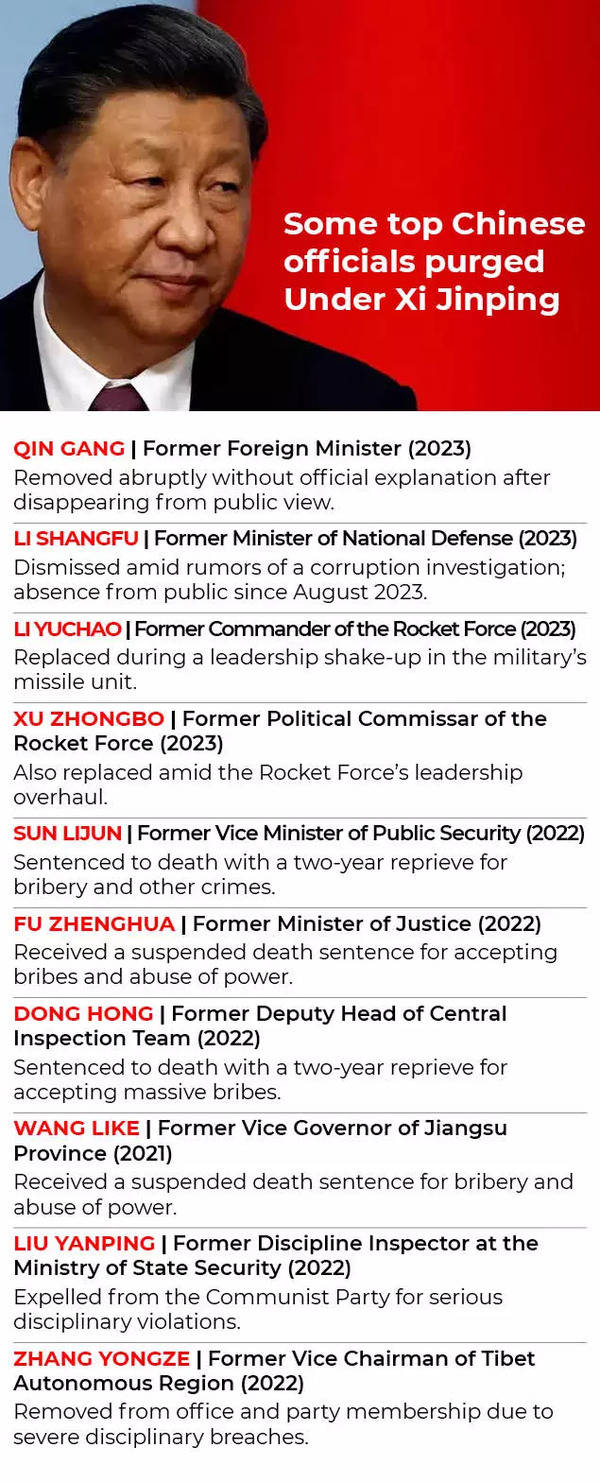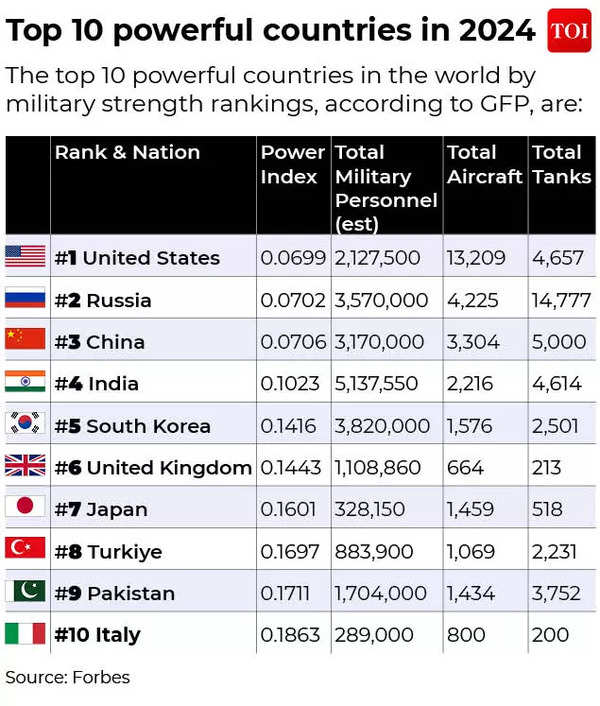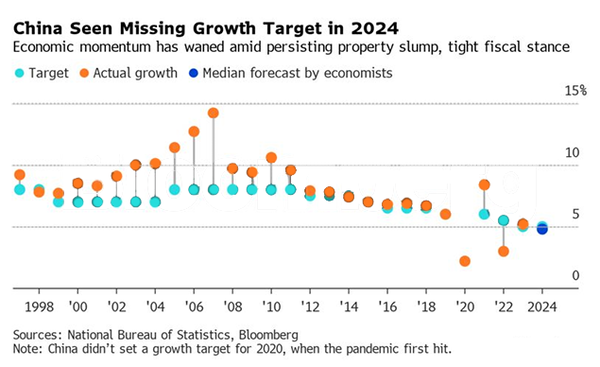A new RAND Corporation report has cast doubts on the combat readiness of China’s People’s Liberation Army (PLA), despite the country’s rapid military modernization. While China has built the world’s largest navy and continues to enhance its air force, missile capabilities, and cyber warfare tools, the report argues that the PLA remains fundamentally focused on upholding Chinese Communist Party (CCP) rule rather than preparing for high-intensity warfare.
These findings challenge the dominant narrative that China’s military advancements make it an imminent military threat to the US and its allies, particularly in the Indo-Pacific. Instead, the report suggests that the PLA’s main priority is internal stability and political control, raising questions about how effectively it could fight a large-scale war.
Why it matters
Amid escalating US-China tensions, concerns over a potential conflict—especially over Taiwan—have grown. Some military analysts warn that China could achieve a “decisive military edge by 2027”, possibly tempting Beijing to use force against Taiwan. However, the RAND report suggests that despite its impressive arsenal, China’s military has yet to prove its ability to conduct complex joint operations necessary for modern warfare.
As per an earlier Bloomberg report, US intelligence assessments suggest that President Xi Jinping’s military purge was driven by revelations of deep-seated corruption that threatened his plans to modernize China’s armed forces. The widespread corruption, particularly within China’s Rocket Force and the broader defense industrial base, has raised serious concerns about the country’s military readiness and its ability to engage in a conflict. These findings have cast doubt on the effectiveness of Xi’s efforts to strengthen the military and bolster China’s strategic capabilities.
US officials now believe that the scale of corruption has made Xi less likely to pursue major military actions in the near future. The pervasive misconduct within key military sectors has significantly weakened China’s warfighting capabilities, leading to concerns about its operational preparedness. These intelligence insights indicate that rather than advancing aggressive military initiatives, Xi may need to focus on addressing internal weaknesses and restoring confidence in China’s defense infrastructure, the Bloomberg report said quoting US intelligence report.
If China’s military remains politically constrained and struggles with corruption and internal inefficiencies, the prospect of a full-scale war with the US may be far less likely than commonly assumed.

US officials now believe Xi is less likely to contemplate major military action in the coming years than would otherwise have been the case, according to the people, who asked not to be named discussing intelligence. The US assessments cited several examples of the impact of graft, including missiles filled with water instead of fuel and vast fields of missile silos in western China with lids that don’t function in a way that would allow the missiles to launch effectively, one of the people said.
A report in Bloomberg
The big picture
- The PLA has made significant progress in military technology, including advancements in stealth aircraft, submarines, and hypersonic missiles. Some of its weapons systems, such as anti-ship ballistic missiles, are designed to deter US military intervention in the region.
- Despite these advancements, the PLA has not fought a war since 1979, when it suffered heavy losses in a brief border conflict with Vietnam. This lack of combat experience raises questions about its ability to effectively deploy its forces in a high-intensity conflict.
- The report highlights that the PLA prioritizes political loyalty over battlefield competence. “The PLA remains fundamentally focused on upholding CCP rule rather than preparing for war,” the report states. Political officers oversee military decisions, and promotions are often based on party loyalty rather than merit.
- Internal corruption is a significant challenge. The PLA has been plagued by cases of embezzlement, fraudulent procurement, and fake training records, all of which undermine its operational effectiveness. Despite anti-corruption efforts under President Xi Jinping, many analysts believe corruption remains deeply entrenched in the system.
- Heavy political indoctrination further weakens the PLA’s combat capabilities. Soldiers are required to spend a large portion of their training on studying party ideology, limiting the time available for realistic combat drills and exercises.
The PLA spends up to 40 percent of its training time on political topics. This dedication mirrors a broader shift in China, in which political indoctrination occupies a growing share of education and learning.
RAND report titled ‘The Chinese Military’s Doubtful Combat Readiness’

What they’re saying
- The report argues that China’s military buildup is designed “first and foremost to bolster the appeal and credibility of CCP rule.” In other words, the PLA’s primary function is to maintain domestic order and deter internal threats to the regime, rather than prepare for external conflicts.
- Chinese state media and military leaders frequently emphasize the importance of “combat readiness,” but internal assessments reveal serious deficiencies. “Xi Jinping worries that China’s troops are not ready to fight,” a recent report in The Economist noted, citing concerns within the Chinese leadership about the PLA’s effectiveness.
- “Despite those known issues within China and the PLA, I don’t think any military planner in the region is going to just dismiss the PLA as a paper tiger,” Collin Koh, research fellow at the S Rajaratnam School of International Studies in Singapore, told CNN.
- The PLA’s inability to conduct integrated joint operations is a major weakness. While US forces regularly conduct large-scale joint exercises across multiple branches of the military, China’s drills remain limited in scope. The RAND report notes that “Chinese military forces frequently inflict punishing losses on intervening US forces” in war game simulations, but the real-world ability to execute such operations remains uncertain.
China’s ability to translate that materiel power into combat power remains far from proven. History has repeatedly shown that militaries sometimes fail to effectively use their advanced armaments in battle. For example, Qing dynasty troops equipped with qualitatively superior warships lost the First Sino-Japanese War (1894–1895) to their more-skilful and -determined Japanese adversaries. As China’s decline accelerates, the PLA’s mission of upholding CCP rule will likely gain added urgency, while its mission of improving combat readiness will likely recede even further.
RAND report titled ‘The Chinese Military’s Doubtful Combat Readiness’
Zoom in: The Taiwan question
- One of the biggest concerns surrounding China’s military buildup is whether it will attempt to take Taiwan by force. The RAND report, however, suggests that China’s rhetoric about Taiwan does not necessarily indicate a desire for imminent conflict.
- Chinese leaders, including Xi Jinping, have repeatedly stated that Taiwan’s unification with the mainland is a “historical inevitability.” However, Beijing has not set a specific deadline for military action, and its official statements continue to emphasize “peaceful reunification.”
- The PLA appears to have done little concrete planning for a full-scale invasion of Taiwan. Unlike the US military, which routinely develops and updates detailed operational plans for potential conflicts, “no study on how China’s military could defeat US forces has surfaced in any academy affiliated with the Chinese military,” the report states.
- China’s military budget continues to grow, reaching $231 billion in 2024—second only to the US. However, much of this spending is directed toward prestige projects, such as aircraft carriers and space capabilities, rather than the logistics and troop mobilization necessary for a sustained war.
- Even if China attempted to invade Taiwan, its military would face enormous logistical challenges. Amphibious landings are among the most complex military operations, requiring extensive coordination between air, naval, and ground forces. Given the PLA’s limited experience with such operations, an invasion could result in heavy Chinese casualties and a prolonged conflict.
The CCP does value Taiwan unification but cares more about urgent, largely domestic social, political, and economic threats to CCP rule.
The RAND report
Between the lines: China’s decline may weaken the PLA further
The RAND report warns that as China’s economy slows and domestic challenges mount, the PLA may become even more focused on maintaining CCP control rather than improving combat readiness.
China’s economic growth has slowed significantly, and unemployment, debt crises, and demographic challenges are putting pressure on the government. A struggling economy could lead to increased political instability, making the PLA’s role in domestic security and regime survival even more critical.

The PLA’s reliance on financial incentives to recruit and retain personnel suggests that morale could become an issue. The report notes that “frequent increases in PLA pay and benefits suggest that this trend is already well underway.”
A weakening China may actually reduce the likelihood of war. Rather than risk a costly military conflict that could backfire, Beijing may choose to wait for a more favorable geopolitical situation before attempting any major action against Taiwan.
What’s next
- US defense planners may need to rethink their approach to China’s military challenge. While the US military remains focused on preparing for a potential conventional war with China, the RAND report suggests that China is more likely to pursue indirect methods of competition.
- Rather than engaging in direct military conflict, China may seek to undermine US alliances, expand influence through economic coercion, and increase support for US adversaries such as Russia, Iran, and North Korea.
- China’s military may also play a greater role in non-traditional security threats, such as cyber warfare, space operations, and political influence campaigns.
- The US may need to shift its defense strategy from preparing for a large-scale war to countering China’s influence in non-military domains, such as economic statecraft, technology competition, and regional diplomacy.
- In the end, China’s military power is real, but its ability to translate that power into battlefield success remains an open question.
(With inputs from agencies)




